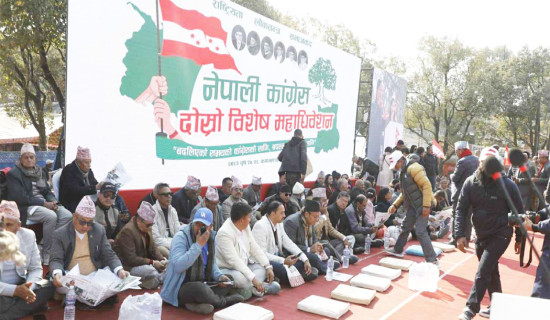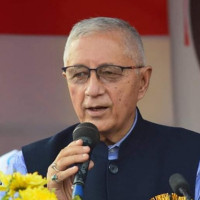- Sunday, 11 January 2026
Drowning deaths call for serious action
Kathmandu, Aug. 10: On July 25, the National Disaster Risk Reduction and Management Authority (NDRRMA) conducted a discussion with stakeholders on the occasion of World Drowning Prevention Day.
The NDRRMA, the central body overseeing disaster prevention and management across the country, had called representatives from concerned departments, law enforcement agencies and non-government organisations.
According to the NDRRMA, the participants stressed the need of increasing awareness about drowning at the local level. However, after a fortnight since the meeting, no steps have been taken to prevent death by drowning.
The daily news bulletins of Nepal Police Headquarters show that 17 individuals died by drowning between July 25 to August 8. Of them, 13 were less than 16 years old.
The majority of the drowning deaths were reported in Saptari district (4) followed by Morang (3).
Worrying situation
According to the World Health Organisation (WHO), there are an estimated 236,000 annual drowning deaths worldwide.
Similarly, the WHO states drowning is the third leading cause of unintentional injury death worldwide, accounting for 7 per cent of all injury-related deaths.
Interestingly, Nepal did not even have proper data on drowning deaths until late. While authorities said they did not have accumulated data on drowning incidents until last year, the NDRRMA made public a report in coordination with Nepal Police on July 25 this year.
As per Nepal Police data cited in the report, on average, 400 individuals died by drowning in Nepal annually. Of them, 53.7 per cent were less than 25 years old.
The NDRRMA states that most drowned while playing/swimming, crossing a river or committing suicide.
Nevertheless, the authorities accept that they still lack concrete data on drowning incidents in the country.
Five individuals were also found dead along the bank of a river in Achham, Saptari, Sarlahi, Doti and Palpa districts on Tuesday. Nepal Police said that drowning seemed to be the cause of the deaths.
Nepal Police said that several individuals were found dead on the bank of a river every now and then. Experts argue that fatality and morbidity due to drowning can be reduced to a great extent.
Speaking at the discussion programme on drowning prevention on July 25, Dr. Kedar Marahatta of WHO, Nepal, and Sunita Kayastha, an emergency specialist at UNICEF, Nepal, echoed that the drowning cases
involving children can be reduced by almost 80 per cent with effective awareness measures.
In its drowning prevention guideline, the WHO suggests that teaching basic swimming and water safety skills to school children aged 6 years and older and establishing daycare centres are two of the most effective ways to prevent drowning.
According to the WHO, on average, these two interventions are estimated to generate a return on investment of USD 9 for each dollar invested over a 30-year timeframe.
Ishwor Karki, Nepal’s swimming coach and secretary at the Nepal Swimming Association, who also participated in the discussion programme, had also suggested the need of teaching basic swimming skills to all.
Likewise, experts suggest training locals to give CPR (cardio-pulmonary resuscitation) would also help reduce the chances of death after an individual is rescued from a water source.
Children are the majority of the victims of drowning because they can drown in a small water mass, including a bucket of water. This is why experts argued that proper awareness is essential to prevent drowning.
The experts gathered on World Drowning Prevention Day also stressed the need for investment from the federal as well as local levels to increase awareness and teach swimming and first-aid skills to the locals. However, no effective steps have been taken for drowning prevention in any part of the country yet.
“After the discussion on July 25, we are preparing a report. The report will be submitted to the executive committee. The committee will then decide on further steps,” said Dhruba Bahadur Khadka, spokesperson for the NDRRMA. Khadka said that the NDRRMA had not taken any other steps for drowning prevention.
















